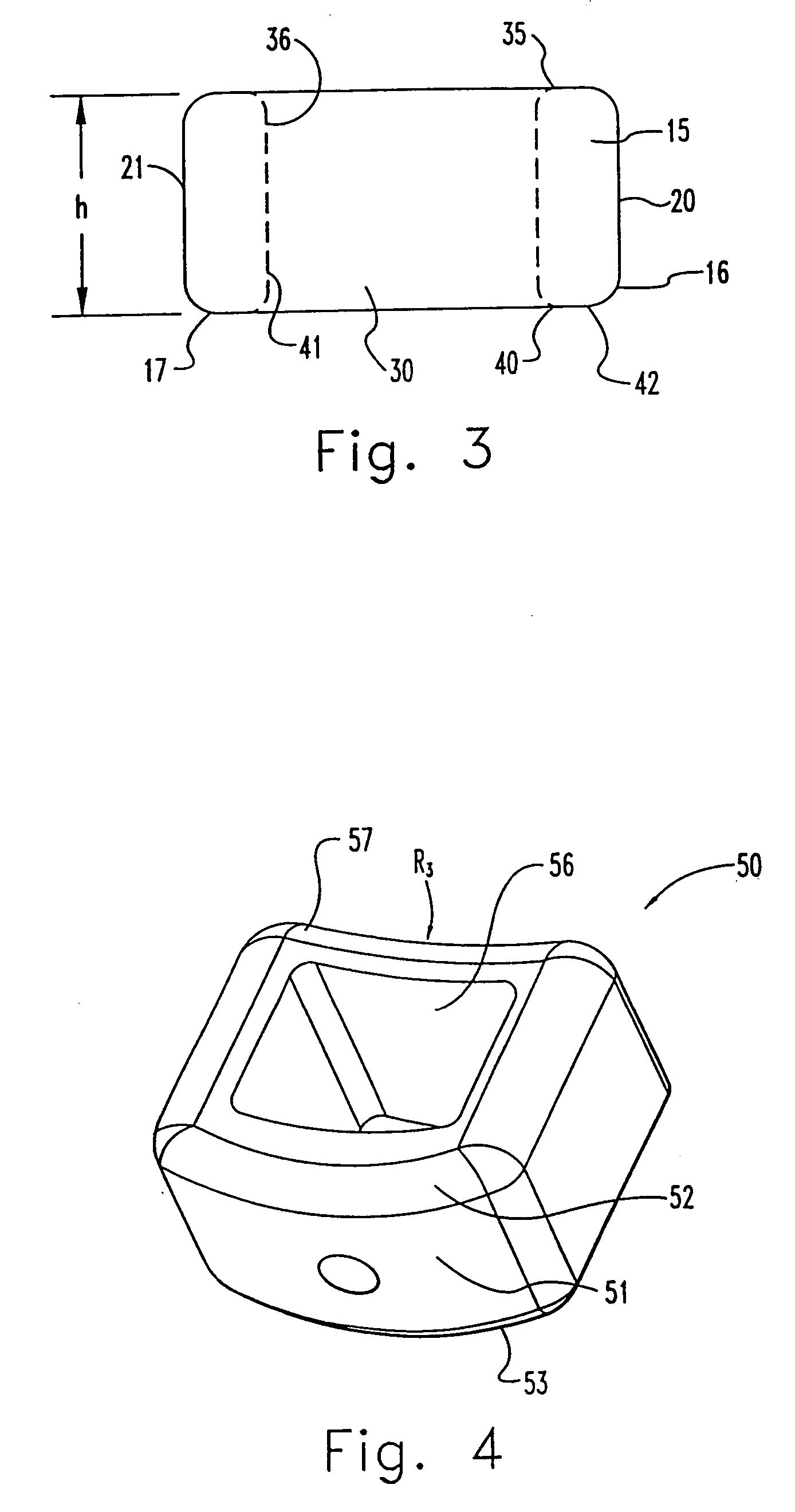Intervertebral spacers
a technology of intervertebral discs and spacers, which is applied in the field of intradiscal space and hollow intervertebral spacers, can solve the problems of affecting the stability of the spine, so as to prevent significant subsidence of the implant.
- Summary
- Abstract
- Description
- Claims
- Application Information
AI Technical Summary
Benefits of technology
Problems solved by technology
Method used
Image
Examples
Embodiment Construction
[0028] For the purposes of promoting an understanding of the principles of the invention, reference will now be made to the embodiments illustrated in the drawings and specific language will be used to describe the same. It will nevertheless be understood that no limitation of the scope of the invention is thereby intended, such alterations and further modifications in the illustrated devices, and such further applications of the principles of the invention as illustrated therein being contemplated as would normally occur to one skilled in the art to which the invention relates.
[0029] The present invention provides hollow spinal spacers for engagement between vertebrae which are sized and configured to fill the space left after discectomy. The inventive spacers restore height of the intervertebral disc space and provide immediate load bearing capability and support for the vertebral column without internal fixation. This invention eliminates the need for invasive autograft harvesti...
PUM
| Property | Measurement | Unit |
|---|---|---|
| Ri | aaaaa | aaaaa |
| thick | aaaaa | aaaaa |
| height | aaaaa | aaaaa |
Abstract
Description
Claims
Application Information
 Login to View More
Login to View More - R&D
- Intellectual Property
- Life Sciences
- Materials
- Tech Scout
- Unparalleled Data Quality
- Higher Quality Content
- 60% Fewer Hallucinations
Browse by: Latest US Patents, China's latest patents, Technical Efficacy Thesaurus, Application Domain, Technology Topic, Popular Technical Reports.
© 2025 PatSnap. All rights reserved.Legal|Privacy policy|Modern Slavery Act Transparency Statement|Sitemap|About US| Contact US: help@patsnap.com



